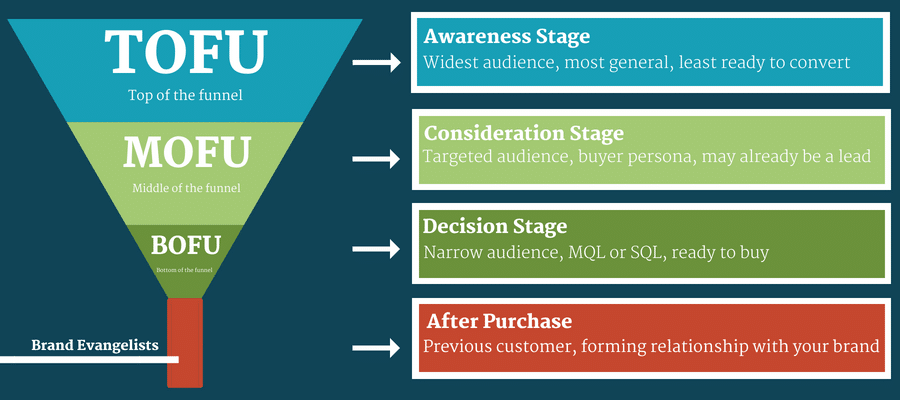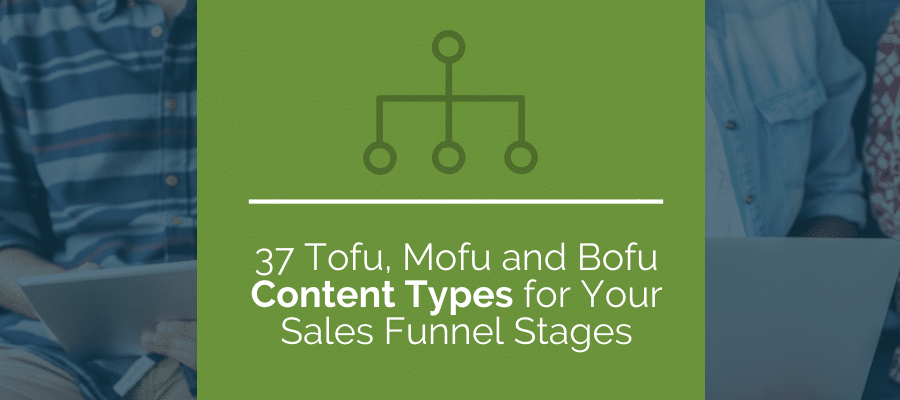
As many as 50% of leads aren’t ready to buy when they first inquire about your business, product or service. This makes lead nurturing and understanding sales funnel stages essential to sales conversion. With content to lead customers through each stage—Tofu or top of the funnel, Mofu or middle of the funnel, and Bofu or bottom of the funnel—web visitors can become leads and, eventually, sales. Tofu, Mofu and Bofu content types are all different, but each is important to close the funnel and maximize lead conversions. We’ve updated this post in 2024 to discuss the latest strategies and types of Tofu, Mofu and Bofu content.
Try these 37 Tofu, Mofu and Bofu content types for every sales funnel stage, as well as after-purchase content to promote brand evangelism.
37 ToFu, MoFu, and BoFu Content Types
In this post
What are Tofu, Mofu, and Bofu?
Tofu: Top of the Funnel
Mofu: Middle of the Funnel
Bofu: Bottom of the Funnel
After Purchase/Brand Evangelists
What Are Tofu, Mofu, and Bofu & How Do I Use Them?
The sales funnel can be divided into three general stages; Tofu or top of the funnel, Mofu or middle of the funnel, and Bofu or bottom of the funnel. Depending on your business type, products or services, each stage might look a bit different for you. In general, Tofu, Mofu and Bofu sales funnel stages look like this:
- – Tofu: Top of the funnel (Tofu) content is designed for the awareness stage. Buyers don’t yet know about your business and you want to get their attention with this content.
- – Mofu: Middle of the funnel (Mofu) content is designed for the consideration stage. Buyers are aware of their problem or that something is missing, and they’re considering solutions. This content should explain the problem and possible solutions.
- – Bofu: Bottom of the funnel (Bofu) content is designed for the decision stage. Buyers are ready to pick a solution. This content should convince them that your solution is the best, or make your solution easily available.
- – Brand Evangelism: Buyers have made a purchase or plan to make a purchase from your business. Brand evangelism content is designed to strengthen relationships further and improve customer loyalty.
Before organizing Tofu, Mofu, and Bofu content types around sales funnel stages, it’s important to understand who your buyers are and what your total sales funnel looks like. Create buyer personas first to determine how buyers find, think about, and interact with your brand. Consider how long buyers spend in each stage and questions they might ask as they move through each stage. You should have a lead scoring system in place to know when a buyer moves from one stage to the next.
Starting at the top of the funnel, we’ll address each sales funnel stage and how Tofu, Mofu and Bofu content types fit into a successful content marketing strategy. Throughout the post, we’ll use the example of a company selling bicycling accessories and an interested customer to show what these content types might look like.
Take a closer look at content marketing and strategy
Download the Executive’s Guide to Launching an Inbound Marketing Strategy
Tofu: Top of the Funnel / Awareness Stage
- – Widest audience
- – Most general
- – Interested in what you do
- – Least ready to convert
- – Lowest value
Top of the funnel or awareness stage buyers have just discovered they have a problem or they may be vaguely aware that something is missing. These people do not yet know about your business, so Tofu content is designed to get their attention where they are most likely to see it. This might be a social media ad or search ad, a social media post, short video, or content partnership.
Media types and content change fast in 2024. Updating your marketing strategy regularly and adapting your sales funnel will help it to stay relevant and effective. As you change your strategy, keep the following in mind for your top of the funnel, Tofu content.
What you will need to create Tofu content:
- – Understanding of what media your prospects consume and how: consider the media platforms, types, time spent, level of interest or engagement for each, and how these habits might change with the emergency of new technology.
- – Know what gets your prospects’ attention: consider the themes as well as the topics, such as humor, emotional investment, interesting facts, inspiration and more.
- – Your prospects’ demographic information for targeting: Consumers in different age groups, income brackets, urban or rural areas, lifestyle and other demographics are likely to be interested in different things.
Customer Example; My pant leg keeps getting stuck in my bicycle. It’s ruining my pants and it’s not safe. I know I’m going to keep biking, but this has got to stop. Other people must have this problem, I’m going to see what they’ve done about it. I like using Instagram to get fitness tips, and I like following famous cyclists. Maybe I’ll find something there or, if I remember, I’ll do a Google search when I get home.
How to Create Effective ToFu Sales Funnel Stage Content Types
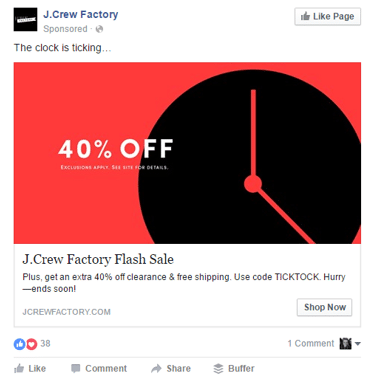
Targeted remarketing ads like this one can help your Tofu sales funnel content get noticed.
Content at this sales funnel stage gets your prospects’ attention and introduces your business to them. Tofu content should accomplish three things; cut through media noise to get your potential customer’s attention, create a positive and lasting impression of your business, and show that your business is relevant to their problem.
Repeat Your Message
Tofu sales funnel content can be challenging—it’s harder than ever to get your customer’s attention. This is why it’s helpful to know what your prospect is looking for and what they respond to. It’s also important to remember it might take several types of Tofu content and several appearances before a customer takes notice. Studies show that ten ad exposures is required for recall. Reaching people who are more likely to be interested (your ideal customer) can help to decrease this number.
Target Your Audience
Accurate ad targeting or social media targeting by demographics or interests will be important to reach the right people. You also want your Tofu sales funnel stage content to be relevant. If your funny social media post gets a lot of shares but it has nothing to do with your business, it probably won’t be effective in the long run. Finally, your Tofu content should make the potential customer take the next step and create some type of relationship with you. This might mean following your social account, joining a group you run, signing up for emails, or even just visiting your website. Remember, if a customer visits your website, you can use remarketing ads to show your products or services to them again as they browse the internet.
ToFu Sales Funnel Stage Content Types
1. Social media post: Target platforms that your buyer personas are likely to use, and organize your posts around hashtags or communities. Remember that social posts aren’t one-size-fits-all and each platform has its own sharing and content curation rules. Example: That moment when your bike chain eats your morning bike ride good vibes #cycling #bikelife on Instagram

With social media ads, you can put your brand in front of your ideal customer using ad targeting strategies.
2. Social media ad: With the right information about your potential customers, such as demographics and common interests, you can show your social media ads to the people who are most likely to click on them. Example: A picture of a happy cyclist with the ad copy “cycling gear for a good morning ride” on a targeted Facebook ad.
3. Influencer partnership or endorsement: An influencer or industry authority may already have your audience’s attention. Work with an industry authority with a large following and ask about a product endorsement or advertising. Example: Ironman triathlon record-setter Jan Frodeno compares cycling gear in a YouTube video.
4. Infographic: Give customers an overview about a question, problem, or topic, ideally showing easy-to-understand statistics about others with the same concern. Example: Most popular bike accessories infographic.
5. Overview blog: Using high-search-volume keywords and SEO to generate traffic and easy to scan content, help your buyer understand the problem and what they could do about it. Example: Top 12 bicycle safety risks for city cyclists.
6. Short video: Create a short (less than a minute) video that will help your persona. The video can be general and address a particular topic and not necessarily a specific problem. This can be useful for Instagram, YouTube or other platforms were video is well-received. Example: 10 city cycling safety tips in under a minute.
7. Quiz or survey: Use a series of short questions to get more information about your buyer and help them understand a topic, problem, or community. Example: What type of cyclist are you?
8. Display ad: Display ads show up on articles or pages your customers are already on, usually under the term “sponsored content” or something similar. Create a compelling heading and Tofu content to pull your customers in. Example: “Cycling injuries are becoming more common: here’s how to prevent them” on a health or wellness blog.
9. Introductory email: Welcome your new leads and use awareness stage content to move them to the next sales funnel stage. Example: Beat these 10 city cyclist problems.
Bonus: Short clip: As of 2024, the use of short form video, such as that on Instagram, TikTok, and YouTube Shorts, has increased substantially. According to prominent marketing toolset Hubspot’s annual media report, “Short-form video offers the highest content ROI and will earn more investment than all other formats.” Create a compelling video clip, usually about ten to thirty seconds long, depending on your preferred video platform, to grab your customers attention. Example: “10 bicyclist stunts in 10 seconds with a Go-Pro camera”
Mofu: Middle of the Funnel / Consideration Stage
- – Targeted audience
- – Meets buyer persona criteria
- – Interested in a benefit you provide
- – May already be a lead
- – Moderate value
At the middle of the funnel stage, the buyer is now researching solutions to their problems or finding ways to fill something missing in their life. People at this stage are considering the value of each solution and objections they might have. If your previous Tofu content was successful, they are already acquainted with your business and have some kind of small relationship with you. The goal of Mofu content is to deepen this relationship by educating the customer about their problem and solution.
Once again, though the media types and content types that you use to further engage with your leads are likely to change as time goes one, a few common factors can help you adapt your strategy. Keep these things in mind to create Mofu content.
What you will need to create Mofu content:
- – A small existing relationship with your customer (Ie; social media follower, previous website visitor, newsletter sign-up)
- – A platform for producing educational content (blog on your website, a blogging platform, video blog etc.)
- – Call-to-action (CTA) to move to the next stage
Example; Well, I found a few different solutions from people I follow on Instagram and blogs I read. Looks like I can roll up my pant legs, but my legs will get cold. I can use velcro straps, but what if those get caught too? What if I stuff my pant legs in my socks? But won’t that wrinkle my pants? If I use clips, what if they come off? I really want a solution that works, so I’m going to look into this further.
How to Create Mofu Sales Funnel Stage Content
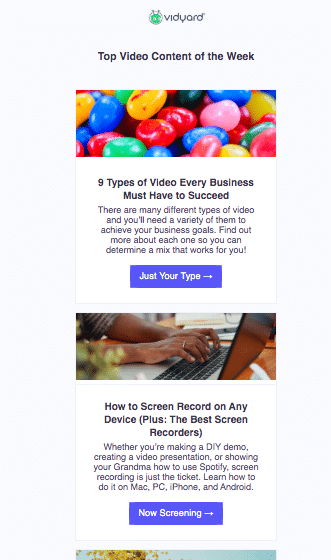
A newsletter like this one can help you maintain and improve your connection with your lead.
The minor relationship you forged with your customer through your Tofu content will provide an opening for your Mofu content. The content for this sales funnel stage should explain solutions, address objections, and present benefits of each solution. While it’s ideal to present your solution in its best light, it should be realistic and honest, as all Tofu, Mofu and Bofu content types should be.
Strengthen Relationships
Though your buyer may have given you their email address, followed your social account or visited your website, it doesn’t mean they’re ready to buy yet. Depending on the product, buyers may spend a little or a lot of time on Mofu content. Your business model will impact the length and content of all Tofu, Mofu and Bofu content types. High price products or items that a customer uses every day will require a longer middle of the funnel stage, and more content. It’s important here to estimate how long buyers spend in this stage, and to understand what triggers show that they’ve moved into this stage and out of it.
Mofu Sales Funnel Stage Content Types
10. Email drip: With the right content, emails are still highly-effective. For 85% of professionals, email communication is preferred. Use attention-grabbing headings and high-quality, relevant content to get more email opens.
11. In-depth blog: Again using keyword research as well as audience demographic research, curate in-depth content to solve a problem. If you can’t get hard numbers on long-tail keywords, see what your customers are talking about in related social groups or on Q&A forums to create an effective business blog. Example: 35 cyclist problems and hassle-free solutions.
12. Relevant news: If new invention, big event, new product release, store opening or other news relates to the customer’s problem, it can be helpful content, but should be chosen carefully. Example: New bicycle model saves lives for city cyclists.
13. Checklist: Help customers solve a problem using an organized set of tasks. Example: 8 point bicycle safety checklist before you hit the road.
14. Ebooks: If the problem or solution is more complex, an attractively designed, informational ebook can give the customer the information they need. Example: The (abridged) bicycle maintenance book for savvy cyclists.
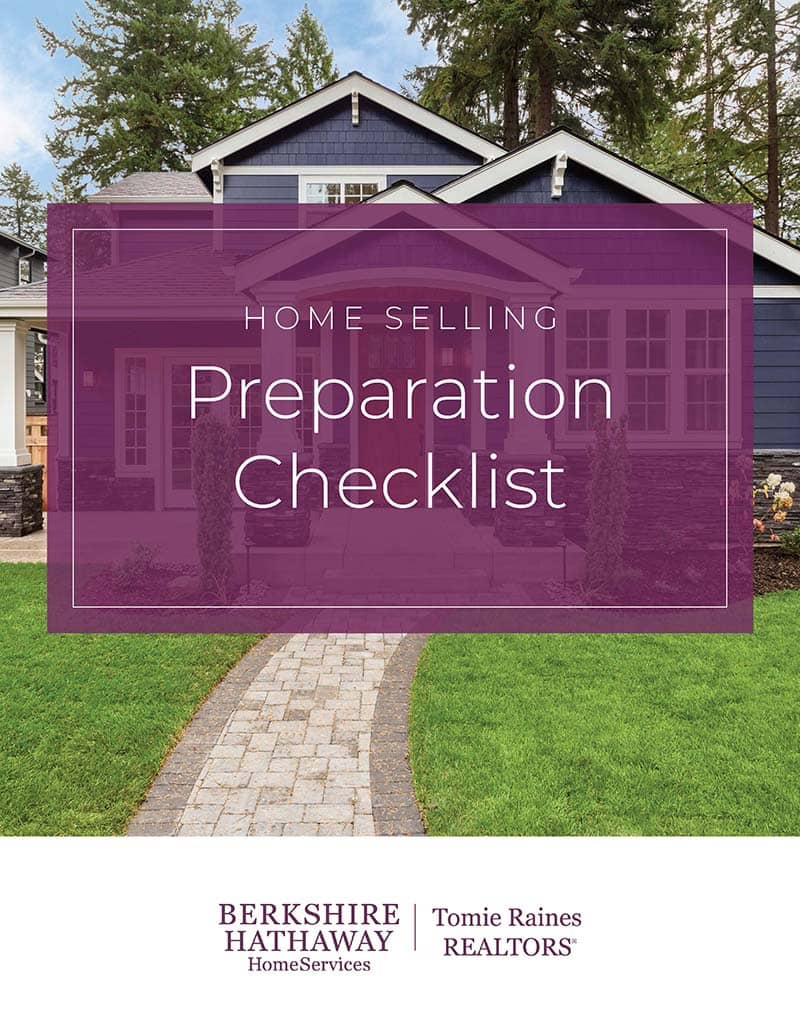
An instructional ebook can inform a customer about problems and solutions at the Mofu stage.
15. Guide: Lend your industry expertise and show the best way to solve a problem, including detailed step-by-step instructions. Bicycle buyer’s guide: all the bicycle accessories you will ever need.
16. Templates: Outline a way that you solve a problem, and give your customer the basics for applying the solution to their situation. Example: Map template to plot your safest route.
17. In-depth video: 60% of website visitors would rather watch a video than read an article. Walk customers through a complicated process to leverage the power of video in Mofu content. Example: How to fix a broken bike chain in 4 easy steps.
18. Newsletter: A high-quality newsletter is a great way to get more out of the content you’re already producing, while staying at the top of your customer’s mind. This might be monthly, bi-weekly, or something else, and it should give your customers content they really want.
19. Microblog: Hosting your blog on your own site is generally a good way to improve your site traffic and get the most out of your website. However, in some cases, you may find it more useful to use an existing blog platform or micro-blogging site to reach your customers where they’re already consuming content, such as Reddit, Tumblr, or Medium.
20. Slideshow: Slideshows can be effective ways of illustrating complicated processes or topics. These are especially helpful to share on social groups or via LinkedIn.
Bonus: Sequential Stories: Video content can be highly engaging at every stage of the sales funnel, including the middle of the funnel. Create compelling mofu video content by creating a series of short storying-telling videos. Add subtitles, since many who watch videos don’t use sound enabled. This is a good way to strengthen connections with users who already follow you on video-oriented platforms.
Bofu: Bottom of the Funnel / Decision Stage
- – Narrow audience
- – MQL or SQL
- – Interested in your specific product
- – Ready to buy
- – High value
At this sales funnel stage, your buyer understands their problem, has selected their solution, and is now looking for a particular product. Ideally, by offering them the previous information they needed, you’ve already forged a relationship with this person and they’re more likely to choose your brand. As your content changes and your sales funnel and marketing strategy adapts to new technology, keep the following in mind.
What you’ll need to create Bofu content:
- – An understanding of the customer’s problem: Try to put yourself in your customer’s shoes and consider how to solve their problem, and what type of solution will make the most sense for them.
- – A platform for presenting possible solutions: Your solution also has to be accessible for your customers. Consider how your customers might find it and where it will make the most impact.
- – Enticement to buy a product or try a service: Easy segues and natural transitions to buying a product can help to complete the sales funnel.
Example: I watched some videos and cyclists like me seem pretty happy with pants clips. So where can I get some affordable, durable pants clips? Should I go to a store, or buy online? Are pants clips pretty much all the same, or are some better than others? I found a few businesses in my previous search that look pretty cool, I’ll check those out first. I wonder if any of them sent me discount coupons.
How to Create Bofu Sales Funnel Stage Content
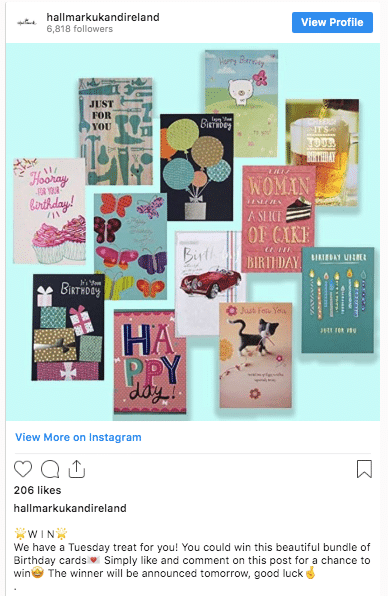
A giveaway like this one can make the final leap between lead and customer.
Content at this sales funnel stage should showcase your product while avoiding a direct sales pitch. It’s helpful here to demonstrate how the product works, showcase the product’s features, and show benefits customers receive by using the product. Though the ultimate goal is a sale or purchase, all Tofu, Mofu and Bofu content types should focus on helping the customer, not selling to them. Previous customer testimonials, case studies or endorsements from industry experts or influencers can help provide information at this stage without a direct sales pitch.
A Smooth Transition
This content should segue naturally from the previous content and into the next step; purchase. Consider where this buyer persona prefers to make a purchase; online? In your online store or a third party site? In a store? A big box store or a small local store? Make this as easy to find as possible. Again, use triggers and lead scoring to know when a customer transitions into and out of this stage.
Bofu Sales Funnel Stage Content
21. Case studies: Tell an existing customer’s or a known industry figure’s story. Illustrate problems or challenges that the buyer in this sales funnel stage also struggles with, and show how the problem is solved. Example: Karen Jones uses pants clips to cycle to work.
22. Testimonials: Testimonials are key to establishing social proof and trust. You might use these on a dedicated testimonials page, product page, pricing page or other pages designed to convert.
23. Product demonstration: Show the product in action in a short video. Example: See how easy pants clips are to use.
24. Product features: Show what your product can do and benefits it provides, especially advantages it has over the competition. Example: pants clips product page.
25. Product comparisons: Go head-to-head with your competition and showcase your advantages. Remember, it’s okay if competitors win in some areas; your product’s advantages should be relevant to your persona. Example: Pants clips vs. Velcro straps
26. Webinars or Webinies: These video instruction segments are ideal for products with higher buyer resistance. To keep customers’ attention, shorter (5 minute) webinies have become a common replacement for webinars (20 to 30 minutes or longer). Example: Champion cyclists address cycling dangers and how to avoid them in upcoming webinar.
27. Giveaway: Many customers who have learned about your product but might not be ready to buy can be swayed by a giveaway. You might present this via social media, newsletter, or a group you’re a part of.
28. Coupon: Similar to a giveaway, a discount might be the motivation a customer needs to give your product or service a try. Try presenting your discount as an invitation for first-time buyers to help this offer get noticed.
29. Proof as UGC: User-generated content (UGC) works as social proof, demonstrating the quality of your product by showing that other people are confident in it. Compile your existing customers’ social posts, videos, blog posts or other content to create convincing Bofu content. Remember to ask for permission first.
Bonus: Live Broadcasts: Estimates show that the global live streaming market grew from $1.24 billion in 2022 to $1.49 billion in 2023. It’s expected to reach $3.21 billion in 2027. Live broadcasts such as livestreaming events, competitions, interviews, shows, commentary and other types of videos help to create authenticity and spontaneity that can further improve connections with customers. Example: “See the start of the Tour de France on our livestream!”
After Purchase / Customer Evangelists
- – Narrow audience
- – Previous customer
- – Interested in forging a relationship with your company
- – Very high value
It can be anywhere from 5 to 25 times cheaper to keep an existing customer than convert a new one, according to Harvard Business Review. This means the right content aimed at existing customers can yield even higher ROI. If a customer had a good experience with your brand, your choice of content can turn them into an brand evangelist and a lifelong customer.
What you’ll need to create brand evangelist content:
- – A list or group of existing customers: It will be helpful to have data on these customers, such as how long they’ve been customers, their buying habits, their first point of contact and more.
- – A reliable way to reach them: email one of the best ways to stay in touch with your customers, but social media is becoming increasingly popular, as well as webinars or live events, and similar means.
- – Understanding of why customers like your brand or what they want from you: customers may simply love saving money with your brand, they may love the quality of your products, your fair-trade or philanthropic practices, or something else.
Wow, these pants clips are exactly what I needed! My pants-ripping problems are all in the past. This company even donates money to buy bicycles for people in developing countries. I’m a fan. I wonder if I could get a matching helmet from them too?
How to Create Brand Evangelist Sales Funnel Stage Content
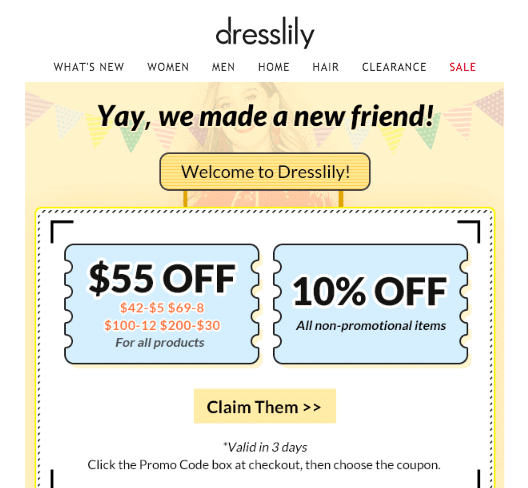
If your customer values your affordable prices, coupons like this are a great way to reward them.
Success! Your Tofu, Mofu and Bofu content types have worked their magic and converted another customer. But the sales funnel isn’t over yet. Content after purchase can turn a one-time customer into a lifelong customer and brand evangelist. This content should give them additional reasons to support you, in addition to a great product or experience. To make your brand a part of your customers’ lives, your content should be continuously relevant to them, though not necessarily to solve a problem. It might also inspire, amaze, surprise, intrigue, or make a customer’s day.
A quick survey or questionnaire can tell you what a customer really enjoys about your business and wants to see more of. Maybe it’s simply convenience and affordable prices. In that case, your brand evangelists will probably respond best to coupons or deals. Maybe your customers enjoy your spectacular customer service. In that case, you’ll want to spotlight problem-solving cases and show that you’re listening to your customers’ needs. Maybe your customers are ethically- or environmentally-minded, and they appreciate your fair trade goods or environmental efforts. Then, you’d want to emphasize good works you’re a part of or environmental initiatives you’ve started.
Choose your goals, triggers and scoring at this stage of the sales funnel carefully. Do you want to encourage repeat purchases? In this case, you’ll want to move a buyer from after purchase content to discounts or rewards programs. Do you want them to talk about your brand? Then you’ll want to highlight the quality of your business and encourage social sharing and reviews.
Brand Evangelist Sales Funnel Stage Content
30. Special feature blogs: Content for blogs at this sales funnel stage should be different than previous blogs you’ve written. These may focus more on your business or products, such as events you are holding or attending, good works you are involved in, or contests and giveaways. Example: Pants Clips Company partners with Good Works Cycling charity for environmentally-friendly transport in developing nations.
31. Re-engagement emails: Vary your email content and layouts to keep your customers interested. Ask what your customers are interested in to keep your information up-to-date and increase engagement. Be sure to segment your audience to ensure you’re delivering the right content at this buyer’s journey stage. Example: Has your cycling routine changed? Tell us.
32. Contests or giveaways: This user-generated content strategy focuses on content from your buyers instead of your brand. Incentivize your customers to share their purchases or experiences online and expand your reach. Example: Share your Pants Clips Company pictures and win a helmet to match your bicycle.
33. Storytelling videos: This content is meant to engage and inspire. You might highlight exceptional activities from particular customers, partner businesses, charity work, or positive messages you wish to support. Example: Karen Jones transformed her life with everyday cycling.
34. Interactive campaigns: Using multiple platforms and varied content, including a way to submit user-generated content, rally your company and your customers around a relevant cause or message. Example: Share your bicycle safety tips and rally for cyclist safety.
35. Newsletters: Keep your customers engaged with snackable newsletters featuring helpful tips, product discounts, upcoming events, inspiring stories, and more.
36. Community forums: Create a safe and welcoming place for customers to share their experiences and connect with others. Moderate these communities to position yourself as an expert and maintain a positive atmosphere.
37. Online and offline events: Allow everyone to get involved by posting live feeds of seminars, talks, or trade shows and regularly hosting both online and offline events. Example: Watch Pants Clip Company cyclists compete LIVE in the Iron Man Triathlon.
Bonus: Podcasts: Podcasts have been gaining popularity in recent years. Though the growth has slowed a bit, there were about 9% more listeners in 2024 compared to 2023, amounting to over 500 million users worldwide. These long-form audio broadcasts are usually informative, entertaining or both. Though these take time and expertise to create, this can be another avenue to connect with customers and share your existing content.
Bonus: Newsletter Subscriptions: Platforms offering free or paid newsletter subscription services have increased substantially in recent years. Substack, for example, has recently doubled its user base in one year. This can be a great option for businesses focused on written content, and a great way to generate additional revenue by selling ad space or subscriptions.
Tips to Improve Your Sales Funnel
Now that you have some ideas for tofu, mofu and bofu content types, you may have started to plan or reassess your sales funnel content already. As previously mentioned, it’s a good idea to reassess your sales funnel regularly, and make sure that you’re using the media types that your audience is using. For example, as video content and live broadcasting grows, more and more customers are using platforms like TikTok, Instagram Reels and YouTube Shorts. Reassessing your sales funnel regularly will not only help you maintain connections with your target audience, but also gain an edge over competitors who may be slow to react.
- – Monitor media trends: Media trends change faster than ever. As new platforms and technologies emerge, see who is using them and how. Monitor your competitors as well as brands who target similar audiences.
- – Stay current: When you pinpoint a new type of media that might work well for your brand, try it out. Spend a few minutes a day or a week experimenting with the new platform, so you can see first-hand how it’s used.
- – Monitor customer behavior: It’s nearly impossible to stay ahead of every trend. Prioritize trends that resonate with your target audience. If you notice your views, engagement, or leads falling, see if your customers are moving to other platforms or changing their media consumption habits.
Delivering the right content at each sales funnel stage is essential to effective lead nurturing. When you can deliver the message and information customers are looking for at the right time, you’ll be the first to come to mind when it’s time to make a purchase. This will not only increase sales, but also strengthen customer relationships and build brand equity.

